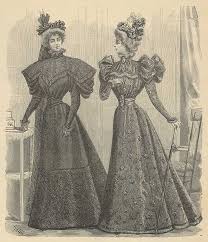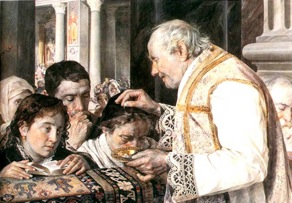The colour Gray was of extreme importance in Elizabethan clothing. The English Law dictated who could wear the colour gray.
Gray was the colour of mourning and remorse. The colour symbolized death and sorrow. Gray as a neutral colour was often associated with indifference, modesty, and humility and was worn by monks. The drab grey colour was widely accepted and even worn by the beggars and the wanderers.

People who wore the colour Gray during the Tudor age belonged to both upper and lower class.
The religious significance of the colour Gray
Gray is often considered as an achromatic colour literally meaning “without colour”. It is midway between black and white and was associated with the colour of ashes.
In medieval Europe, ashes were of great religious significance among the devoted Christians. It was believed that devoted Christians would arrive barefoot at the church on the first day of Lent. During Lent, Christians do fast and give up worldly pleasures to honour the sacrifices of Jesus Christ’s journey in the desert for 40 days. Ash Wednesday is a Christian Holy day and is the first day of Lent.
On Ash Wednesday, devoted Christians would arrive barefoot to the church and declare their sins in front of the congregation and expressed their grief and repentance. The priest would place ashes in the form of a holy cross on their forehead. Afterwards, he would give them a sackcloth garment covered with ashes to wear. The sackcloth was made of rough cloth and represented grief and mourning. This completed their act of penance before the holy almighty.
The penance also included charitable work, sleeping on the floor and manual labour. They were forbidden to bathe, cut their hair and even speak for a period of six weeks.
The penance was a religious act designed to nurture love and devotion and allow people to return back to the shelter of God. The Lenten season inspired people to harvest love and devotion to God and their fellow human beings. In the Bible, the ashes represented death, destruction, and grief.

The Gray colour also signified plain living and humility. The subdued gray colour of the monk’s robes signified poverty and detachment from the world and total devotion to God. The apparels they wore were dyed with local vegetable dyes and made from thick coarse fabric.
Gray, colour of mourning and funerals
Gray being a balanced colour was considered sophisticated and formal. It was worn both by people from the upper and lower class. The colour was associated with loss and depression. Hence, it was worn exclusively in the form of suits and formal wearing during funerals.
Dyes for colour Gray
Cheap dyes like black walnut and oak galls were used to obtain the colour gray.
